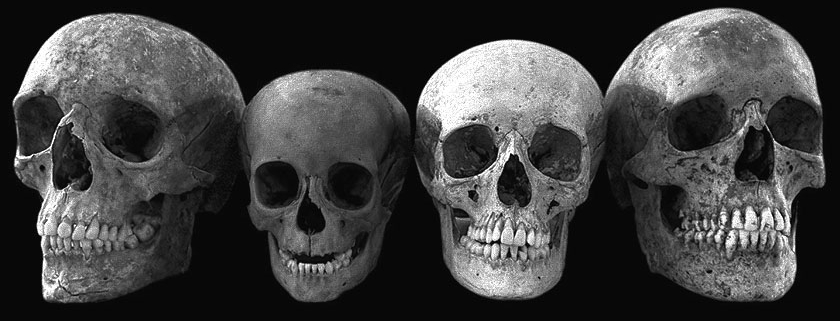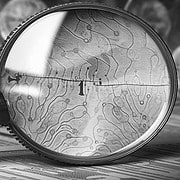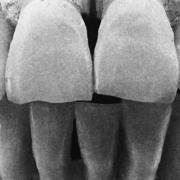POSSESSION AND OWNERSHIP OF HUMAN SKULLS A COMPREHENSIVE GUIDE
Although it remains a fascinating and sometimes macabre question whether one is allowed to possess a human skull, behind it unfolds a dense and intricate forest of ethical, legal, and cultural considerations. Law enforcement agencies, lawyers, and even private collectors sometimes find themselves confronted with human remains, whether in the course of professional forensic investigations, academic research, or simply out of a passion for collecting. Drawing on my extensive experience and profound knowledge of this subject, I aim to illuminate the legal, ethical, and cultural-historical foundations that must be considered in this context in a comprehensive and neutral guide for those who wish to explore the phenomenon of the death cult more closely.
PLEASE NOTE: This article deals with the regulation in Germany. European Union rules vary and in a future post we will thoroughly explain the situation from the perspective of applicable EU laws and the individual regulations of the states. We will also address the legal situation in the USA.
POSSESSION AND OWNERSHIP OF HUMAN SKULLS A COMPREHENSIVE GUIDE
Fundamentally, it is legal to possess a human skull. However, this permission must always be considered in the light of a multifaceted framework of ethical principles and legal provisions that emphasize respect for the deceased. The provenance of a skull plays a decisive role. A skull obtained from illegal sources remains legally problematic even if it is intended for scientific research. This guide serves as a trustworthy source of information based on current laws and ethical standards and aims to offer a balanced perspective between scientific relevance, cultural significance, and respect for the deceased.
In view of the ever-changing legal and societal landscape, this guide adapts flexibly to new statutory frameworks and provides a solid foundation for informed decisions. Its purpose is to promote a responsible approach to human remains by bringing together all relevant aspects ranging from forensic methodology to ethical reflection. Within the scientific community human remains hold great importance, particularly in the fields of forensic anthropology and archaeology, although there are no uniform explicit legal regulations governing these practices. The handling of remains varies significantly depending on the context, whether it takes place in specialized research facilities, university laboratories, or within the private collections of passionate enthusiasts.
A particularly delicate aspect is the observance of the prescribed minimum period of rest as stated in the relevant burial laws, for example in the BestattG. These periods differ across the individual federal states and are based on specific procedural regulations set out in the local burial and cemetery laws. In Baden-Württemberg, Brandenburg, and Hesse the required period is fifteen years, while in Berlin, Mecklenburg-Vorpommern, Lower Saxony, and Saxony the minimum period is twenty years. In Saarland the period varies between six and fifteen years depending on the age of the deceased. Typically, this period is determined in close consultation between the cemetery operator and the health department, with the expected rate of decomposition playing a crucial role, a circumstance where the symbolic spade often reveals more than any precise regulation.
Under optimal soil conditions in an environment with good drainage and balanced pH values, it takes roughly four to seven years for a human body to decompose completely. Under adverse climatic or geological conditions, however, this process can extend over thirty years. In extremely moist soils or in clayey substrates, the phenomenon of so-called wax corpses may occur, a situation where the natural decay process essentially comes to a standstill. In the absence of sufficient oxygen, the fats in the skin transform into corpse lipids that deposit as a white, crumbly substance in the tissue, thereby preventing normal decay. In burial law, however, the term corpse is reserved for a largely intact body where the natural process of decay has only just begun. This differentiated definition is particularly relevant when it comes to excluding remains such as plastinates used in exhibitions like the Body Worlds show from strict burial regulations since they serve primarily aesthetic and anatomical purposes rather than eternal repose.
Most of the skulls available on the market or in scientific collections date from periods spanning one hundred to two thousand years. Only more recent teaching skulls and skeletal remains, often originating from non-European countries, have a more recent provenance. A variety of forensic and archaeological methods are used to determine the actual age, ranging from classical stratigraphic analysis and microscopic examination of bone microstructure to radiocarbon dating based on carbon 14. These techniques rely on comprehensive expertise and intensive empirical research. Strict adherence to the required periods of repose and legal provisions is essential to preserve both the statutory framework and the ethical standards governing the handling of human remains.
Let us now turn to the cornerstone of German law, section 168 of the Criminal Code, which governs the disturbance of the peace of the dead. This provision criminalizes any disrespectful or indecent interference with the sacred rest of the deceased, including acts of desecration of corpses and graves. The attempt itself, as laid down in section 168 paragraph 3, is punishable. The mandate of respect for the dead prohibits unnecessary interventions in the body or the ashes of the deceased and requires that the mortal remains remain at the place of interment for as long as possible. In addition to this criminal provision, burial regulations stipulate mandatory periods of rest for corpses and urns, thereby ensuring protection for the dead. Anyone who unlawfully removes or desecrates any part of a deceased body or their ashes is liable to imprisonment for up to three years or a substantial fine. The same applies to those who destroy or damage sites of public mourning or gravesites, with the attempt to commit such acts also subject to legal sanction.
The prevailing legal view is that this offense applies only if the corpse is still recognizable as such and the period of rest is disturbed. The remains must be clearly attributable to a specific individual, which in most cases is challenging. Only if graves are forcibly opened or if severe desecration is committed on corpses or parts thereof can a disturbance of the peace of the dead be assumed. Similarly, section 189 of the Criminal Code, which deals with the defamation of the memory of the deceased, does not apply to every negative judgment; it requires a particularly grievous insult to the memory of the deceased. Offenders may face imprisonment for up to two years or a fine.
The often cited section 259 of the Criminal Code concerning handling stolen goods may also become relevant when acquiring a skull. In this context the buyer, acting as an accomplice in a legal sense, must at least act with conditional intent, meaning that they either know or accept the possibility that the skull was obtained through illegal means.
Observance of the postmortem period is of fundamental importance in German burial law. These periods, which vary by federal state, serve as a protective measure for the sacred rest of the dead. In Baden-Württemberg, Brandenburg, and Hesse the minimum duration is fifteen years, while in Berlin, Mecklenburg-Vorpommern, Lower Saxony, and Saxony a minimum of twenty years is required. When examining human skulls, whether in criminal investigations, customs inspections, or purely academic contexts, a systematic approach is advisable that ensures precise temporal and geographic attribution as well as consideration of all relevant legal aspects.
The initial phase of any such investigation begins with a thorough visual inspection to identify potential forensic clues. Detailed analysis of the preparation techniques and materials used can yield insights into the skulls provenance. Bone alterations such as mineral deposits or signs of erosion provide critical clues regarding the age of the skull and the environmental conditions it was exposed to. These indicators often require microscopic examination and may be further analyzed using chemical techniques. Dental examinations, such as the evaluation of wear patterns on molars, allow inferences about historical dietary habits, while modern dental work such as implants indicate a more recent postmortem modification. Such investigations can also reveal genetic information that aids in determining ethnic origins and familial relationships.
For precise dating, the radiocarbon method based on carbon 14 is particularly well suited. This technique relies on the decay of the radioactive carbon isotope and allows for exact dating of organic material up to approximately fifty thousand years. The procedure requires the extraction of a minimal invasive sample, a step that is regarded as indispensable in forensic practice to ensure scientific accuracy.
Ethical considerations are central when dealing with human remains. It is of utmost importance to preserve the dignity of the deceased. Collectors and researchers must ensure that the remains come exclusively from legal and ethically acceptable sources and are treated with the utmost care. Institutions responsible for collecting human remains for research should implement clear and transparent ethical guidelines to ensure compliance with both legal and moral standards. Human remains are not merely biological artifacts but also carriers of cultural, historical, and symbolic meanings. Consequently, it is essential to display cultural sensitivity and respect the views and traditions of the communities involved when analyzing and presenting these remains.
A comprehensive and transparent documentation of the acquisition history, provenance, and forensic analysis of the skull is essential to demonstrate the legitimacy of ownership. This documentation should include purchase agreements, provenance records, and scientific expert reports. Close collaboration with experts in forensic science, archaeology, and anthropology is indispensable as their detailed analyses contribute significantly to verifying the authenticity and legality of the skull.
In cases where a recently established homeowner later discovers a human skull in the garden, an extensive investigative process is almost inevitably triggered. The authorities must promptly determine whether a crime has been committed, a process that can require considerable resources and time. Under no circumstances should skulls be disposed of in an unprofessional manner. If a person no longer wishes to possess a skull, it is advisable to transfer it to a competent institution to ensure it is handled properly, respectfully, and in accordance with the law.
The possession and forensic investigation of human skulls require a carefully balanced approach between scientific interest, ethical responsibility, and strict legal requirements. Through a responsible, transparent, and methodologically sound handling of human remains we contribute to preserving cultural heritage while safeguarding the inviolable dignity of the deceased. This guide offers a multifaceted insight into the many challenges and requirements inherent in this subject and strikes a balance that is as fascinating as it is polemical.







 ©2021 George Rauscher
©2021 George Rauscher